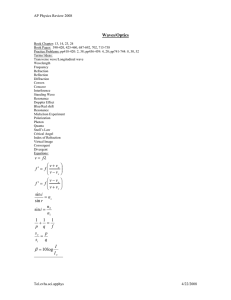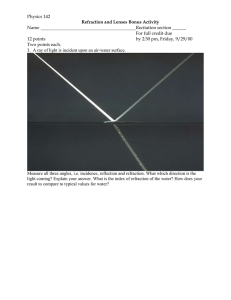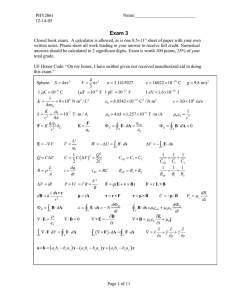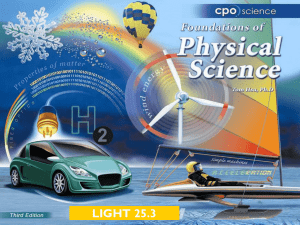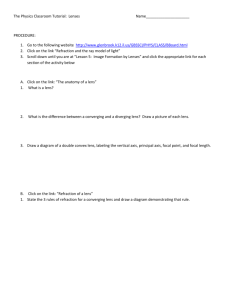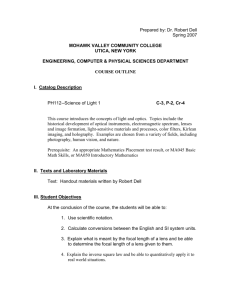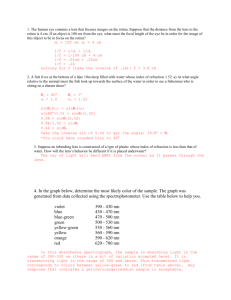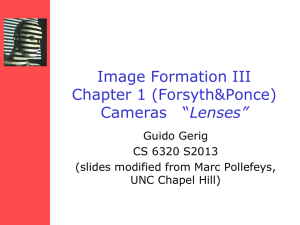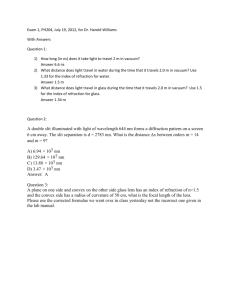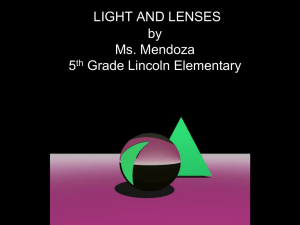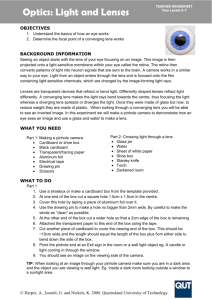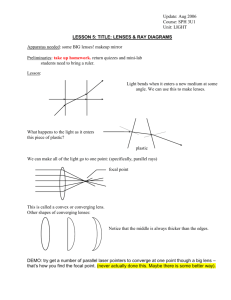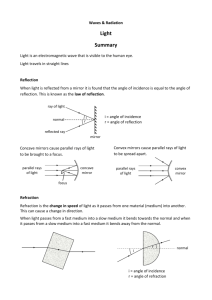Glossary - The Polesworth School
advertisement
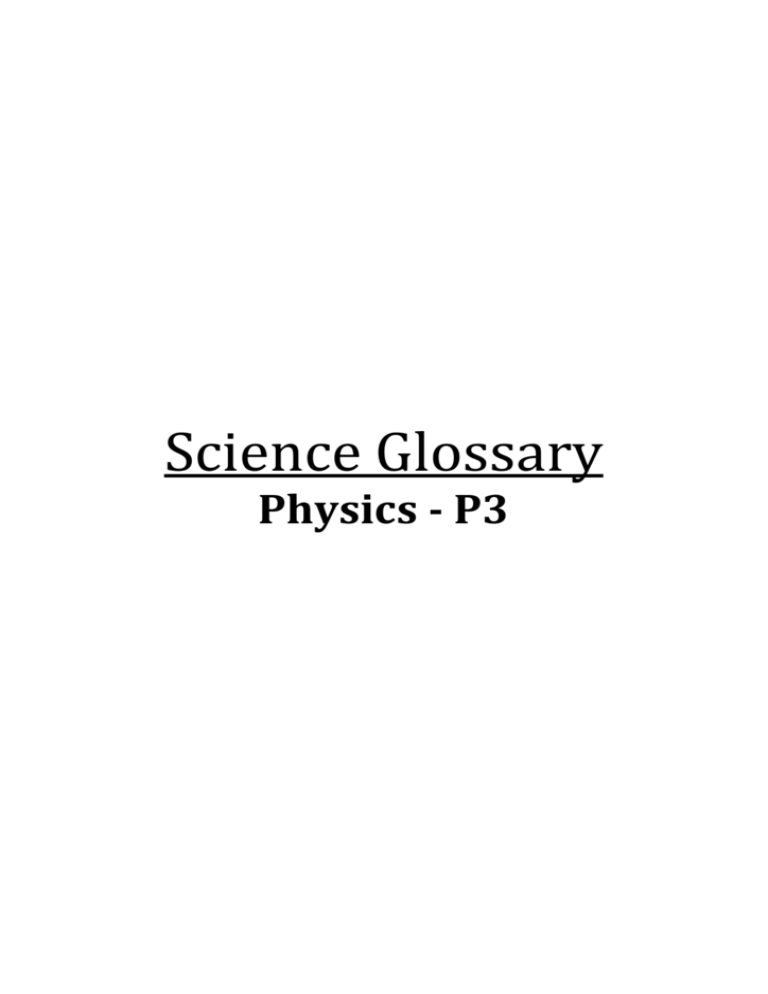
Science Glossary Physics - P3 Science Glossary Physics Unit 3.1 – Medical applications of physics. Key Word Charge-coupled Device (CCD) Converging (Convex) lens CT Scan Dioptre (D) Diverging (Concave) Lens Far Point Focal Length Long Sight Near Point Power of a Lens Definition A device used to form digital images. A lens that focuses parallel light rays onto a point. Convex glasses are converging lenses. Computed tomography scan, a series of x-ray pictures combined into a 2D or 3D image by computer. The unit used by opticians to measure the power of a lens; 1D = 1 (focal length in m). A lens that causes a beam of light to spread outwards (diverge). Concave lenses are diverging lenses. The furthest point at which an object can be seen clearly; it is infinity for someone with perfect eyesight. The distance from the centre-line of a lens to its principal focus; f. Someone with long sight cannot focus on close objects, either because their eyeballs are too short, or the lenses are unable to become round enough to focus. The closest position at which an object can be seen clearly. For a person with good eyesight the near point is about 25cm from the eye. 1/ focal length, measured in Dioptres (D) Principal Focus The point at which parallel rays of light are brought together on passing through a lens. Range of Vision The distance between the near point and the far point for a person’s vision. An image through which light rays pass so that it can be seen on a screen placed at that point. It can be projected The change in direction of a wave as it goes through Real Image Refraction Refractive Index Short Sight Snell’s Law Ultrasound Waves Virtual Image an interface into a different material in which the wave travels at a different speed. An expression that describes the amount of bending that takes place when light passes from one medium to another. The refractive index = sin i/sin, r, where i = angle of incidence and r = angle of refraction. The inability of the eye to focus clearly on distant objects. The law of refraction sin 𝑖 Refraction index, n = sin 𝑟 Sound waves with a frequency above 20 000 Hz, which is too high for the human ear to detect. An image that light rays do not pass through; they only appear to come from the image. They cannot be projected onto a screen Physics Unit 3.2 – Using physics to make things work. Key Word Amplitude Centre of Mass Centripetal Force Effort Equilibrium Hydraulic Press Line of Action Load Oscillation Pascal (Pa) Pivot Pressure Principal of moments Resultant Moment Time period Definition The maximum displacement of a particle as a wave passes; half the height of the wave. A point at which all the mass of an object appears to act. The centre of mass of a hanging object will always be directly below the point of suspension. The force causing motion in a circle, acting towards the centre of the circle The force exerted on, for example, a lever. When something is balanced, e.g. a seesaw is in equilibrium when it is horizontal A force multiplier that works by transferring a small force on a small area via pressure in a fluid into a large force on a large area This goes from the centre of mass and follows gravity going to straight downwards The force exerted on one end of a lever. Vibration or repetitive pattern of movement, for example, up and down or side to side. The standard unit for pressure. The axis of rotation, the axis around which an object, for example a lever, can rotate. The force exerted divided by the area on which it is exerted. Usually measured in pascals (Pa). The sum of the anticlockwise moments equals the sum of the clockwise moments The overall moment acting on something The time taken for one complete oscillation, for example the swing of a pendulum or the passage of a wave.

